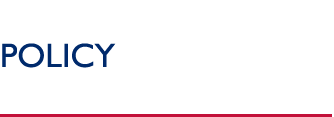Financial Management Systems
Goals and Strategies
The Agency’s core financial system directly supports three of the five government-wide initiatives of the President’s Management Agenda (PMA) (http://www.results.gov).
These initiatives are:
Improved Financial Performance: USAID’s financial management system, Phoenix, is a compliant financial system that meets federal accounting standards. Phoenix supports the Agency in meeting reporting requirements, as well as providing accurate and timely financial information, supporting management operations, and issuing controls to prevent Anti-Deficiency Act violations. Additionally, Phoenix contains a USSGL chart of accounts, allowing financial transactions in Phoenix to be posted immediately to the general ledger.
USAID has been steadily working towards compliance with FFMIA. The Agency’s efforts were rewarded in November 2006, when the OIG provided positive assurance that USAID’s financial management systems substantially complied with FFMIA.
The completed rollout of Phoenix in June 2006 also addressed the remaining compliance issues that kept the Agency at a yellow score under the PMA. In June 2007, USAID was elevated to “green” for Current Status in Improved Financial Performance, validating that Phoenix drives results in key financial areas. The team’s primary focus is to maintain “green” status by making improvements to existing reports, continuing to enhance Phoenix, and implementing new interfaces and systems.
Expanded Electronic Government: As a Web-based system that is accessible by field offices worldwide, Phoenix supports the E-Government initiative. The system interfaces with other planned Web-based initiatives, such as vendor self-service, e-travel, and worldwide funds reconciliation.
Budget and Performance Integration: USAID implemented the cost allocation module in tandem with the rollout of Phoenix. This allows for assignment of direct and indirect costs to the offices that benefit from them and will provide management a tool for determining full costs at the operating unit level.
Phoenix ops and USAID-State collaboration are not related to Budget and Performance integration. The status of financial management activities is outlined below:
- Phoenix Operations: Phoenix is currently operating in Steady State. The Phoenix team continues to release enhancements and upgrades to Phoenix as well as provide continued support to Phoenix users.
- USAID-State Collaboration: USAID continues the coordination of E-Government initiatives with the Department of State. The agencies are jointly operating their financial systems from a common platform in the Department of State’s Charleston, SC facility.
Financial Management Systems Framework
With the overseas deployment of Phoenix completed in June 2006, USAID now has a common Agency-wide system for budget execution, accounting, and financial management. The major USAID financial systems and their relationships are discussed below.
Phoenix: Phoenix is the Agency’s core financial system. One hundred percent of all USAID financial transactions are processed through Phoenix. Phoenix modules include accounts payable, accounts receivable, automated disbursements, budget execution, general ledger, and project cost accounting.
Global Acquisition System (GLAS): USAID is currently replacing Acquisition and Assistance (A&A) with a system called GLAS. The new system, designed to replace the New Management System (NMS) legacy system for A&A, is currently being piloted at headquarters and in specific missions worldwide, and is interfaced with Phoenix.
Business Support Services: Many chief business support applications in the Agency’s financial management systems inventory relate to travel management, property management, and training. These applications include:
- Travel Manager: The GELCO commercial software product, Travel Manager, is currently used in Washington and in Missions to provide travel management support. Travel Manager is being replaced with an e-travel application named E2, which meets GSA and OMB requirements.
- Non-Expendable Property (NXP): The NXP program is USAID’s custom-developed property management system that is scheduled to be replaced.
- BAR/SCAN: A commercial software product used for property management of nonexpendable property in Washington.
Third-Party Service Providers: As part of its strategy, USAID has cross-serviced with other government agencies or outsourced to commercial organizations some of its financial transaction processing. The chief third-party service providers include: - USDA National Finance Center (NFC): USAID has a cross-serving agreement with NFC for personnel and payroll processes for USDH employees.
- Midland Loan Services: USAID has outsourced standard credit reform transactions to Midland.
- Health and Human Services (HHS): USAID has cross-serviced its letter of credit (LOC) processing of grantee advances and liquidations to the HHS Payment Management System (PMS).
Target Financial Management Systems Structure
The primary goal of financial management system modernization at USAID is to support the mission of the Agency, comply with federal requirements and standards, improve the efficiency and effectiveness of Agency operations, and deliver electronic government solutions. The goal will be achieved by architecture planning, capital investment planning, business process re-engineering, and systems engineering. This will ensure that plans are business-focused rather than technology-driven, results oriented rather than process-driven, and developed by business managers rather than technology specialists alone.
The target financial management system will:
- Provide complete, reliable, timely, and consistent information.
- Apply consistent internal controls to ensure the integrity and security of information and resources.
- Utilize a common data classification structure to support collection, storage, retrieval, and reporting of information.
- Utilize an open framework and industry standards for data interchange and interoperability.
- Remain flexible and modifiable to business changes.
- Support timely, accurate, and cost-effective electronic exchange of information with customers and external partners.
Planned Major Systems Investments
Implementing the target financial management system structure will take several more years. The required major system investments will be identified, planned, and sequenced as part of a business transformation initiative that began in 2002 and will extend through 2010. Projects will be selected on the merit of each business case. The broad categories of system investment will include:
- Core Financial System: Phoenix’s underlying Momentum software will be upgraded through successive product releases to ensure sustained compliance with changing federal requirements and the evolution of technology in the commercial marketplace. Upgrades will also enhance Phoenix functionality and overall performance.
- Acquisition and Assistance System: USAID successfully piloted the GLAS to selected offices in Washington and to four missions in the Latin America and the Caribbean (LAC) region. GLAS is a commercial off-the-shelf Web-based procurement tool that is interfaced with the Phoenix. It will improve acquisition processing and standardize data and business practices Agency-wide. The timeline for full deployment of GLAS is dependent on funding and decisions regarding the integration of assistance functionality, consistent with OMB guidance on Grants Management Line of Business Offerings.
- Budget Formulation System: USAID will implement a set of tools and standard business processes to improve Agency-wide budget planning, formulation, submission, and integration with Phoenix. Part of the Manage-to-Budget initiative, USAID’s budget formulation and execution processes will be integrated with its program and performance management processes for collecting information on the performance of Agency programs. This will also address the need to develop a tool to track Operating Year Budget (OYB) data.
- Data Repositories and Reporting Systems: USAID will implement an enterprise-wide “data-mart” strategy to link multiple data repositories using common data elements. Web-based reporting tools will be used to extract, consolidate, and generate reports tailored to managers’ needs across systems and data repositories.
- Business Support Systems: The major initiatives in the administrative service areas will be enterprise-wide deployment of the Agency’s travel system, property management system, and Time and Attendance system.
- Third-party Service Providers: The Agency is expected to continue to rely on and improve interfaces with its current third-party service providers: NFC, Midland Loan Services, and HHS, for the foreseeable future. Further improvements to electronic interfaces to achieve greater integration are being evaluated.
- The Unified Foreign Assistance Coordination and Tracking System (FACTS): FACTS combines all U.S. government agency planning and reporting on foreign assistance activities into one central data system to facilitate country level planning, monitoring, and data management. Country teams will use FACTS to enter and submit information required for the Operational Plans. The goal of the system is to provide one repository for data and a common planning and reporting tool across U.S. government agencies implementing programs with foreign assistance funds.
Back to Top ^ | < Previous Page | Next Page >
|


